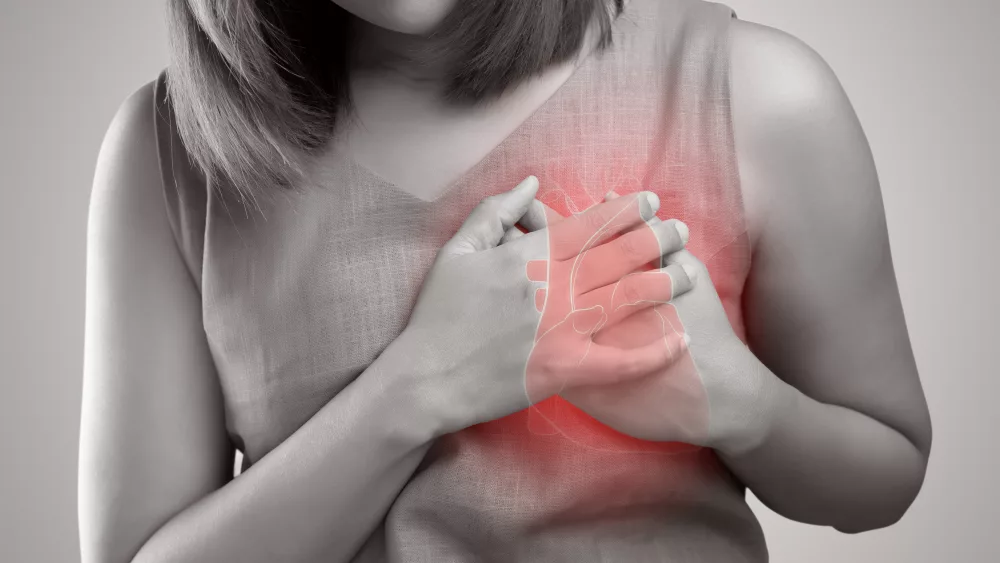Many Americans today have an unhealthy relationship with food which, if left unaddressed, can lead to serious medical issues down the line.
To share a few fast facts:
- A recent study by the Journal of the American Medical Association reported that diabetes and obesity are on the rise among young adults in the United States. These are two major risk factors for heart disease, stroke and certain types of cancer. According to the Centers for Disease Control, these are among the leading causes of preventable, premature death.
- The National Institute of Diabetes and Digestive and Kidney Diseases, based on CDC survey data, found nearly 1 in 3 adults are overweight, more than 2 in 5 adults have obesity, and about 1 in 11 adults have severe obesity.
- And a March study by Surgery for Obesity and Related Diseases found that COVID-19 has led to a change in how Americans view risks of obesity and benefits of treatment. The study found that nearly one third of Americans became more worried about having obesity, and that this concern has led an estimated 28 million people to explore treatments not considered before the pandemic, including 6.4 million who thought about bariatric surgery or taking prescription obesity drugs.
If you’re struggling to eat healthy foods and maintain a healthy weight, there are a few simples steps you can take to set yourself on the path toward developing healthier eating habits. The first step is to understand why you need to make a change. Ask yourself, “Am I making this change to improve my diet, lose weight or decrease disease risk—and am I committed to making that change?”
Once you know why you want to change, it would be a good idea to consult with a registered dietitian. A registered dietitian is a health care professional educated in nutrition and foods and who can translate scientific information into practical solutions to help individuals make positive lifestyle changes. But if you can’t afford one and they’re not covered by your health insurance, then it would be advisable to get as much information as you can from reputable websites and books. A few good places to begin your research include: American Heart Association, American Diabetes Association, and the American College of Lifestyle Medicine. Additional resources can be found at UCSF, Cleveland Clinic, Harvard Health, and Mayo Clinic, CDC and NIH.
The next step is to research what a healthy diet entails (depending on current health conditions or pre-existing health issues). This is an important step, as there are a lot of fad diets out there that could be more harmful than losing a few extra pounds. A good place to start is the Dietary Guidelines for Americans 2020-2025, which is a pretty comprehensive guide for following a healthy dietary pattern at every life stage. Another good resource is the healthy eating plan found on the National Heart, Lung and Blood Institute website. The site helps to assess your weight and health risk, how to control your weight and tips for eating right.
When you’re ready to commit to a dietary change, setting goals can be helpful—especially SMART goals (Specific, Measurable, Achievable, Relevant and Time-bound). For example, “In one month from today, I will have lost 6 pounds in order to reach my final goal weight of 150 pounds.” Additionally, try to make incremental adjustments over time to turn what you’re doing into a healthy lifestyle, rather than just a diet. Outside support can also be helpful as it can encourage you and keep you accountable.
Next, understand that adding healthier foods is usually easier than removing those that are not as healthy. I’ve found that slowly crowding out the less healthy with healthier foods works better for a lot of people. Splurging on food occasionally should not be an issue for most if you understand that it’s for special occasions (especially if you are on a special diet for any chronic disease/disorder).
Once you’ve fully internalized your positive relationship with food, it’s still a good idea to review your progress every so often and take stock of where you are. Life can get complicated with work, family, other health issues or outside factors that may throw you off course. If you’re living with a chronic disease, then it will require more close monitoring.
Above all, don’t get discouraged on your journey toward your positive relationship with food. Depending on the person, it could take anywhere from 30 to 90 days (or longer) on average to break bad eating habits in favor of healthy ones. But once those good food habits have been established, you’ll not only notice a difference in how you look and feel about yourself, but your body will thank you as well.
Praveena Kumar is a registered dietician, Ayurvedic wellness practitioner, yoga teacher and yoga therapist who brings more than 18 years of experience to the Women’s Heart Health Program at MarinHealth.



